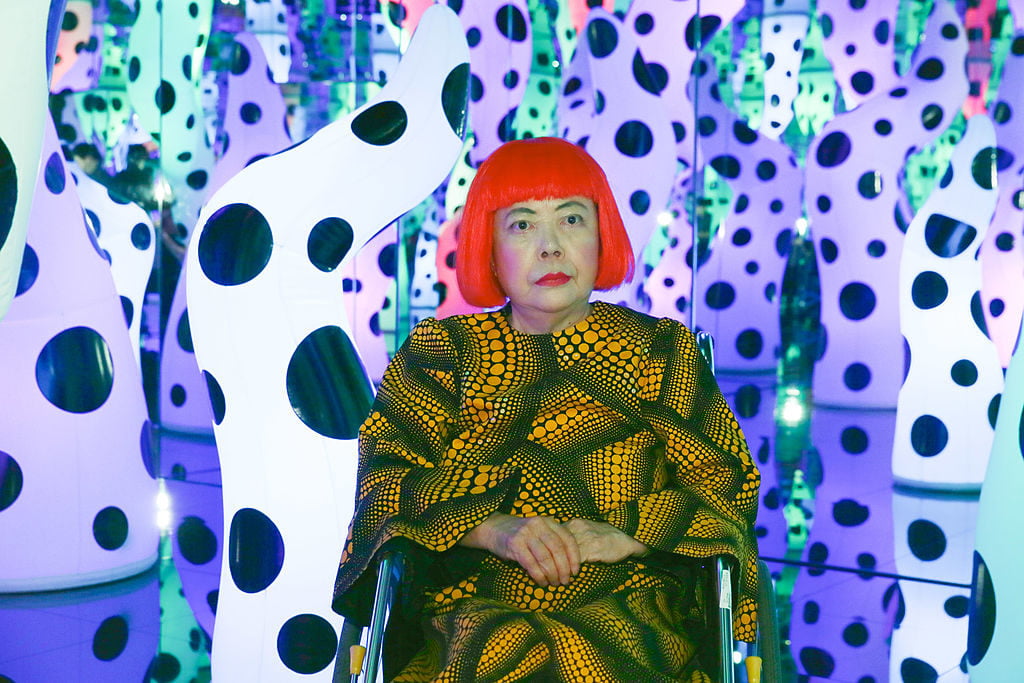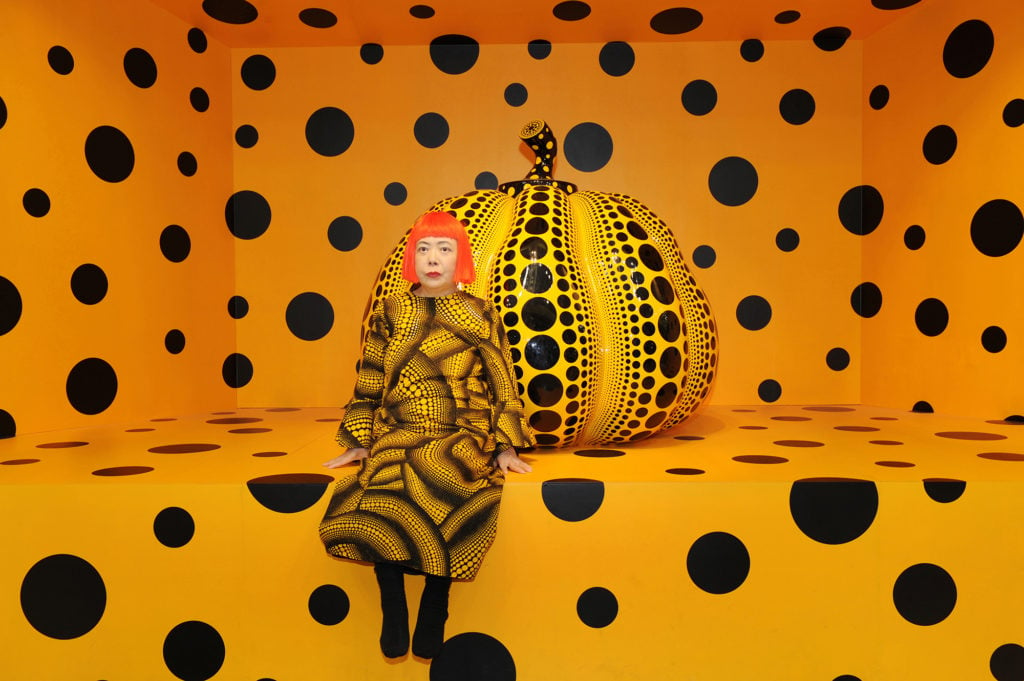Art & Exhibitions
The Yayoi Kusama Craze Is Coming to Europe With a Splashy—But Nuanced—Three-Venue Retrospective
A trio of prominent European curators, including Beatrix Ruf, are organizing this major extravaganza.

A trio of prominent European curators, including Beatrix Ruf, are organizing this major extravaganza.

Kate Brown

If you’re a European museum-goer, be prepared to stand in some long lines, because next year, three major European institutions are planning to present a sweeping retrospective dedicated to the Japanese artist Yayoi Kusama.
The traveling show launches in September 2020 at the Gropius Bau in Berlin, where it will occupy 3,000 square meters (32,000 square feet) of space before it heads to the Fondation Beyeler in Basel that October.
The currently untitled exhibition is being curated by Stephanie Rosenthal, the director of the Gropius Bau and Beatrix Ruf, a guest curator for the Fondation Beyeler. The show is being put together in close collaboration with the artist and her studio. Beatrix Ruf tells Artnet News that the studio is working to complete a new work specifically for each institution, and that the shows will examine “the history of the European perception of Kusama’s work.”
Perhaps surprisingly, it will be the first-ever major exhibition in either Germany or Switzerland dedicated to Kusama, who has rapidly become one of the most sought-after artists in the world, for both the public (with cellphones at the ready) and for the market (Kusama is the auction world’s highest-grossing female artist, with sales totalling $552.9 million, according to a recent study by Artnet News).
But has the world reached peak Kusama while missing the core themes of her work? Some say the recent hype underestimates the complexity of her practice, which explores topics of mental health, feminism, obsession, and self-reflection.

Kusama with PUMPKIN (2010). Courtesy Ota Fine Arts, David Zwirner, and Victoria Miro © Yayoi Kusama.
Rosenthal tells Artnet News the aim of the trio of shows is “to illustrate the revolutionary character and development” of Kusama’s prolific practice “with new perspectives on the artist’s activities and exhibition history.”
The exhibition will return to the beginning of the artist’s career in the mid-1960s, a time when her work was more strongly received by the European public than it was in the US (where she was living) or in her home country of Japan. “Her work was enthusiastically received by public audiences [here in Germany and Europe] and therefore laid new academic ground,” says Rosenthal. Other prominent—though perhaps less sprawling—shows in Central Europe in the past decades have been the 2003 “Yayoi Kusama: Work from 1949 to 2003” at the Kunstverein Braunschweig and “Yayoi Kusama: Dots Obsession – Dots Transfromed into Love” at Haus der Kunst in Munich in 2007.
Ludwig’s director, Yilmaz Dziewior, tells Artnet News that the aim of the show is to “recreate the density” of some of those early installations while contextualizing Kusama’s work in the “social and political atmosphere” of the present. The show coincides with the Museum Ludwig’s mission to broaden its presentations to include 20th- and 21st-century perspectives from Africa, Latin America, and Asia.
News of the European retrospective comes as a major solo exhibition opens at David Zwirner in New York, for which the gallery is anticipating a staggering 100,000 visitors. That show, “Everyday I Pray For Love,” opens on Saturday, November 9, and will include new paintings from her ongoing series, “My Eternal Soul,” as well as plush monochromatic sculptures. Of course, there will be a must-have Infinity Room as well (there are, to date, already 18 versions globally). And—no surprise here—the German and Swiss exhibitions will feature an Infinity Room as well.
Despite the certain level of frenzy the blockbusters are sure to bring, the three organizers maintain that the goal is to present less readily considered perspectives on Kusama’s practice, by way of focusing a good portion of the presentation on early works. There will be examples from every artistic period from the last 70 years: in addition to paintings and sculptures, the exhibition will feature collages, watercolours, ceramics and her avant-garde fashion, some from as early as 1940. There will be other immersive installation rooms from the 1960s as well.
Rosenthal says the curatorial research has delved into seven previous solo shows dedicated to the artist, perhaps in hopes of cracking open a more nuanced way into the 90-year-old artist’s inner creative world: “This comprehensive exhibition will contribute new and vital aspects to the understanding of the complex oeuvre of Kusama,” she says.